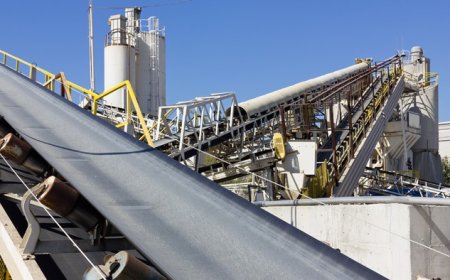Enhancing Infrastructure with Construction Chemicals
In the fast-paced world of modern construction, where durability and longevity are essential, construction chemicals have emerged as game-changers. These specialized materials not only improve the strength and performance of structures but also play a critical role in concrete repair and restoration, preserving aging buildings and infrastructure.
From bridges and tunnels to residential buildings and industrial facilities, concrete is everywhere. However, even this robust material is vulnerable to environmental stress, corrosion, structural damage, and aging. The integration of Construction Chemicals into repair and maintenance protocols ensures the sustainability and functionality of these concrete structures for years to come.
Understanding Construction Chemicals
Construction chemicals refer to a wide range of chemical formulations used during construction activities to enhance performance, improve durability, and expedite the process. They are essential not just during the initial construction phase but also for ongoing maintenance and repair.
1. Categories of Construction Chemicals
Construction chemicals come in various types, each designed for specific functions. Some of the major categories include:
-
Concrete admixtures These are added to concrete to improve its workability, setting time, and strength. Admixtures can also provide resistance against freeze-thaw cycles, sulfates, and chlorides.
-
Waterproofing chemicals Used to prevent water ingress in buildings, these chemicals protect structures from moisture-related damages.
-
Grouting compounds Ideal for filling gaps or voids, they enhance structural integrity.
-
Protective coatings and sealants These create barriers against environmental exposure, enhancing the lifespan of structures.
-
Floor hardeners and curing compounds Applied to concrete surfaces to improve hardness and control curing conditions.
2. Importance of Construction Chemicals
Construction chemicals play an indispensable role in modern construction projects:
-
Increased durability By mitigating damage from moisture, chemicals, or mechanical stress, these additives extend the life of buildings.
-
Improved aesthetics and performance They help in maintaining surface finishes and structural performance.
-
Time and cost efficiency Many construction chemicals allow faster curing and less maintenance, reducing overall project timelines and costs.
The Critical Need for Concrete Repair and Restoration
Despite concrete being one of the most widely used construction materials, it is not impervious to damage. Over time, factors like environmental stress, corrosion of reinforcement, chemical attacks, and physical wear and tear take their toll.
Concrete repair and restoration is the process of diagnosing, treating, and rehabilitating deteriorated concrete to restore its original function, strength, and appearance.
1. Causes of Concrete Damage
Understanding why concrete fails is essential for effective repair:
-
Corrosion of reinforcement steel When steel embedded in concrete corrodes due to moisture and chlorides, it expands, causing cracks and spalling.
-
Freeze-thaw cycles In colder climates, trapped water in concrete freezes and expands, leading to surface scaling and internal cracking.
-
Chemical attacks Exposure to acids, sulfates, or alkalis can compromise the structural integrity of concrete.
-
Overloading or impact Excess weight or accidental impact can lead to mechanical damage.
-
Shrinkage and settlement Improper curing or subgrade preparation can cause cracks and uneven surfaces.
2. Techniques in Concrete Repair and Restoration
The process of restoring damaged concrete requires a combination of engineering knowledge and the appropriate use of construction chemicals. Common techniques include:
-
Crack injection Epoxy or polyurethane is injected into cracks to seal and restore structural integrity.
-
Surface repair with mortars Damaged surfaces are repaired using polymer-modified mortars that bond well and resist further deterioration.
-
Corrosion inhibitors These chemicals are applied to steel reinforcements to slow or prevent corrosion.
-
Recasting and section replacement Severely damaged sections may be removed and recast using high-performance concrete with admixtures.
-
Protective coatings Application of chemical-resistant coatings prevents future chemical or environmental damage.
3. The Role of Construction Chemicals in Restoration
Modern repair strategies rely heavily on construction chemicals to ensure long-term performance:
-
Bonding agents improve adhesion between new and old concrete.
-
Shrinkage-compensating grouts prevent future cracks by adjusting for expansion and contraction.
-
Silane-siloxane coatings provide excellent waterproofing while allowing the concrete to breathe.
-
Polymer-modified materials offer enhanced strength, flexibility, and resistance to environmental attack.
Benefits of Combining Construction Chemicals with Concrete Restoration
Integrating construction chemicals into concrete repair and restoration practices creates a comprehensive solution that ensures safety, longevity, and performance.
1. Sustainability and Environmental Impact
Repairing and restoring existing structures using advanced construction chemicals is significantly more sustainable than demolishing and rebuilding. It reduces material waste, energy consumption, and carbon emissions.
Moreover, modern chemicals are increasingly formulated to be environmentally friendly, using low-VOC (volatile organic compound) materials and sustainable ingredients.
2. Cost Efficiency Over Time
While the initial investment in high-quality repair materials and chemicals may seem substantial, the long-term benefits outweigh the costs. Proper restoration eliminates recurring maintenance issues, reducing operational costs and extending service life.
For example, a building with restored concrete using corrosion inhibitors and waterproof coatings can remain maintenance-free for decades.
3. Safety and Compliance
In many sectors like bridges, tunnels, airports, and high-rises, structural integrity is critical. The use of engineered repair solutions and advanced chemicals ensures compliance with building codes and safety standards.
Failing to repair damaged concrete can result in structural collapses, legal liabilities, and human casualties. Therefore, timely intervention using appropriate materials is not just prudent but essential.
Challenges in Concrete Repair and the Way Forward
Despite technological advancements, concrete repair projects often face challenges:
-
Accurate damage assessment A thorough condition survey is required before repair planning.
-
Material compatibility Choosing the right construction chemicals compatible with existing materials is critical.
-
Skilled labor Trained technicians are required to apply specialized products effectively.
-
Environmental conditions Repairs must be planned considering temperature, humidity, and other site conditions.
The future of concrete restoration lies in smart materialschemicals that can self-heal, change properties based on environmental inputs, or alert to early signs of deterioration. Combined with digital monitoring and predictive maintenance, they are set to revolutionize the industry.
Conclusion
The synergy between construction chemicals and Concrete Repair And Restoration is redefining how we approach aging infrastructure and construction challenges. As urban environments continue to grow and structures age, the demand for durable, cost-effective, and sustainable solutions will only increase.
By leveraging the power of chemistry, we are not just fixing cracks or patching wallswe're safeguarding the integrity of our built environment, ensuring it stands strong for generations to come.






















































